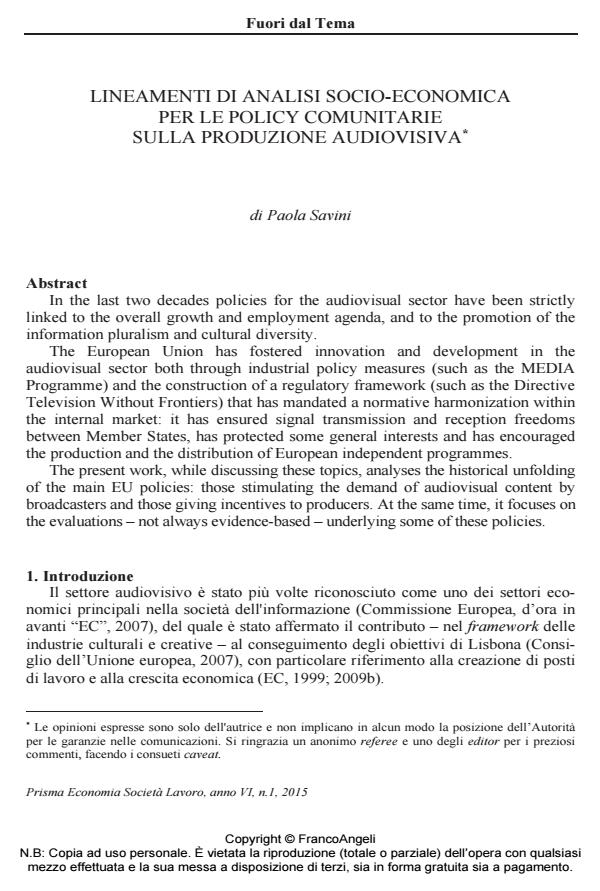Lineamenti di analisi socio-economica per le policy comunitarie sulla produzione audiovisiva
Titolo Rivista PRISMA Economia - Società - Lavoro
Autori/Curatori Paola Savini
Anno di pubblicazione 2015 Fascicolo 2015/1
Lingua Italiano Numero pagine 17 P. 206-222 Dimensione file 90 KB
DOI 10.3280/PRI2015-001018
Il DOI è il codice a barre della proprietà intellettuale: per saperne di più
clicca qui
Qui sotto puoi vedere in anteprima la prima pagina di questo articolo.
Se questo articolo ti interessa, lo puoi acquistare (e scaricare in formato pdf) seguendo le facili indicazioni per acquistare il download credit. Acquista Download Credits per scaricare questo Articolo in formato PDF

FrancoAngeli è membro della Publishers International Linking Association, Inc (PILA)associazione indipendente e non profit per facilitare (attraverso i servizi tecnologici implementati da CrossRef.org) l’accesso degli studiosi ai contenuti digitali nelle pubblicazioni professionali e scientifiche
In the last two decades policies for the audiovisual sector have been strictly linked to the overall growth and employment agenda, and to the promotion of the information pluralism and cultural diversity. The European Union has fostered innovation and development in the audiovisual sector both through industrial policy measures (such as the MEDIA Programme) and the construction of a regulatory framework (such as the Directive Television Without Frontiers) that has mandated a normative harmonization within the internal market: it has ensured signal transmission and reception freedoms between Member States, has protected some general interests and has encouraged the production and the distribution of European independent programmes. The present work, while discussing these topics, analyses the historical unfolding of the main EU policies: those stimulating the demand of audiovisual content by broadcasters and those giving incentives to producers. At the same time, it focuses on the evaluations - not always evidence-based - underlying some of these policies.
Paola Savini, Lineamenti di analisi socio-economica per le policy comunitarie sulla produzione audiovisiva in "PRISMA Economia - Società - Lavoro" 1/2015, pp 206-222, DOI: 10.3280/PRI2015-001018